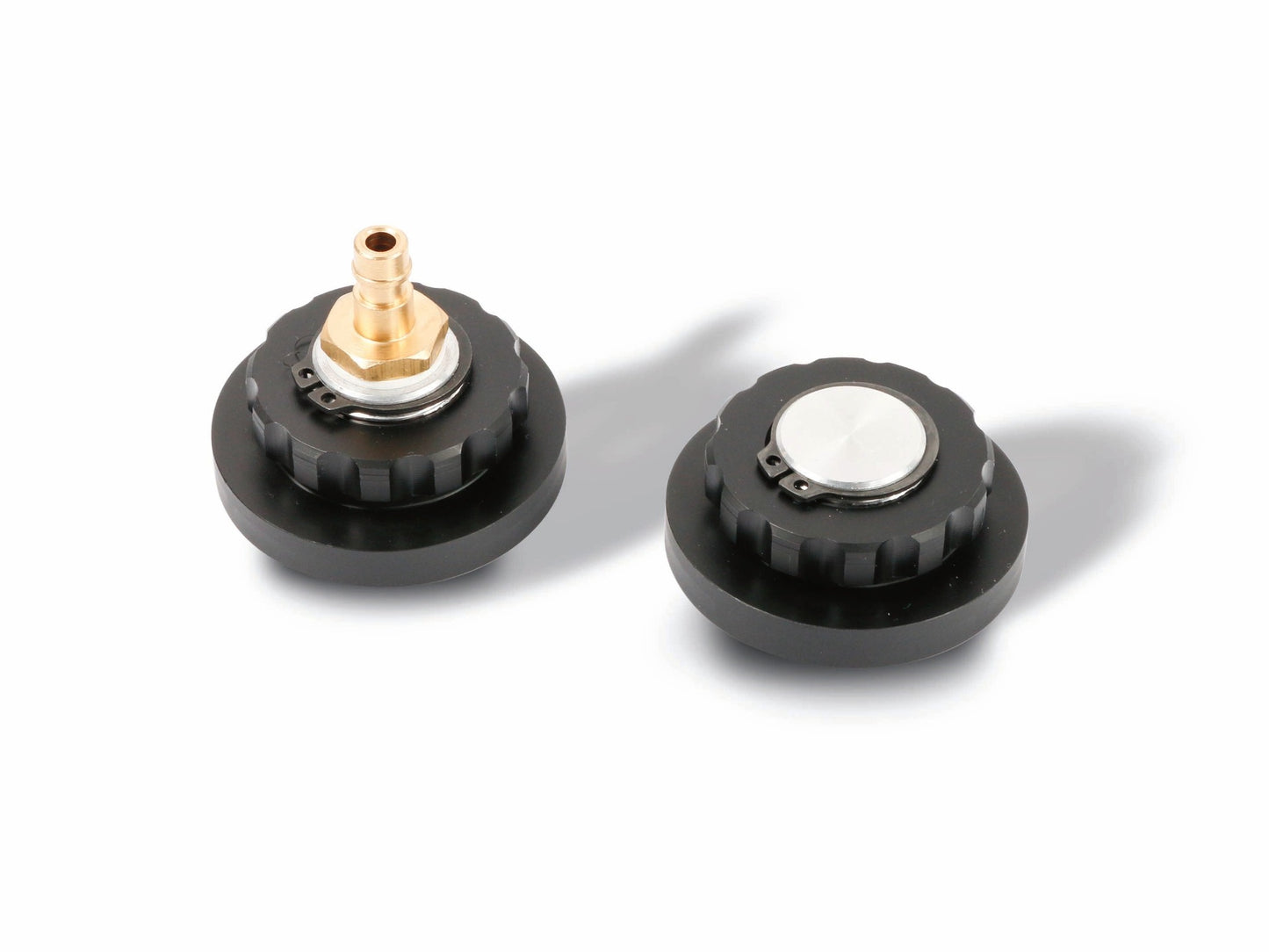Autotestgeräte Leitenberger
Test adapter set of pressure compensation elements for leak testing of HV batteries
Test adapter set of pressure compensation elements for leak testing of HV batteries
Couldn't load pickup availability
In order to increase the range of electric cars, the energy density of the battery cells is constantly increasing. At the same time, the housings are becoming lighter, thinner-walled and therefore more sensitive to pressure. This is why the housing of HV batteries must be ventilated and de-ventilated during uphill and downhill journeys, in different operating conditions or to equalize temperatures. Up to now, this has usually been done by a porous PTFE film. However, this is sensitive to mechanical influences and contamination and can impair air permeability and ultimately the pressure equalization function during normal operation.
In the event of an accident or due to foreign objects, gases or high temperatures can suddenly develop in the battery casings. To do this, pressure and heat must be able to escape suddenly, otherwise the casing threatens to burst. This is a danger for the vehicle and its occupants. Every battery therefore needs 100 percent reliable emergency degassing. Until now, this was only possible if a rupture disk was pierced by a pin when there was a corresponding pressure difference, which meant it was worn out or inoperable.
Recently, pressure compensation elements (e.g. from the manufacturers DIAvent, Freudenberg Sealing Technologies, etc.) have become increasingly popular . both functions
- Ventilation and
- Emergency degassing
in one component. The big advantage: These pressure equalization elements are suitable for long-term use, do not wear out and can be used even after an emergency. These pressure equalization elements are independent components that are locked or screwed.
Why do these pressure equalization elements have to be removed and installed?
During the leak test of a HV battery, these components must be removed because the leak test pressure is higher than the response pressure of the pressure compensation elements. The test pressure would thus be reduced via the pressure compensation elements and thus only a limited Make leak testing possible.
How should the pressure equalization elements be removed and installed?
To ensure an unrestricted leak test (according to specifications) , must the Original component “Pressure relief valve” with the appropriate tool OEW 02 for loosening and assembling the pressure compensation elements and replaced by a Test closure / test adapter PSBG 01_LR be replaced.
What are the test closure and test adapter needed for?
- The test cap – in case the test pressure is introduced or measured elsewhere (in the HV battery housing).
- The test adapter - in case the test pressure has to be introduced via the opening of the DAE.
- Test cap and test adapter - in case two pressure equalization elements are installed on an HV battery .
Article number: PSBG 01 (042742_1)


